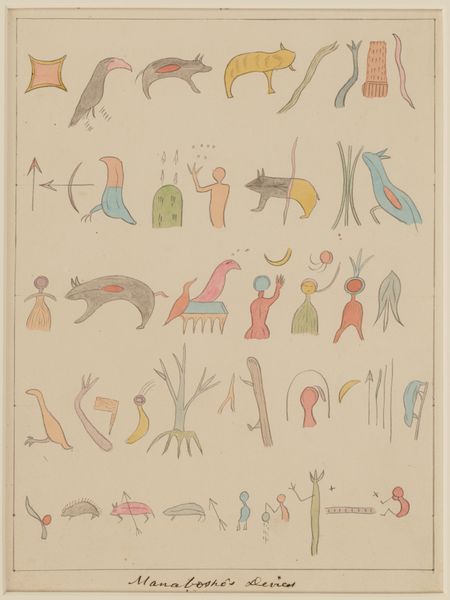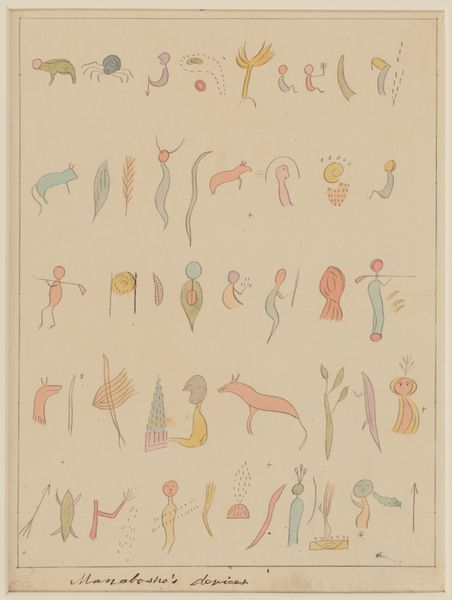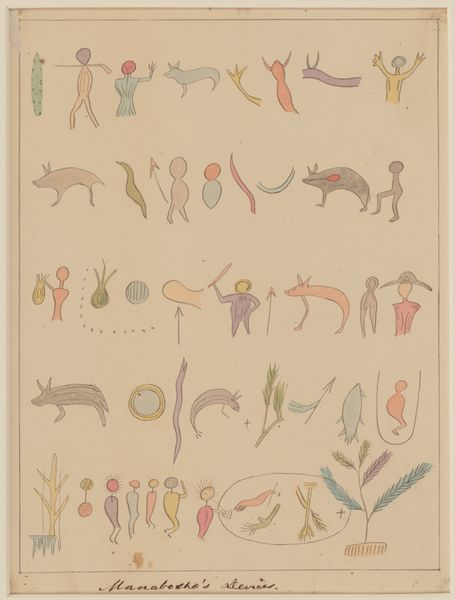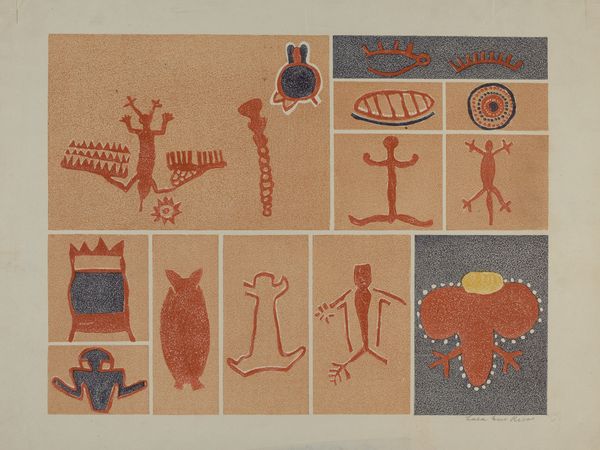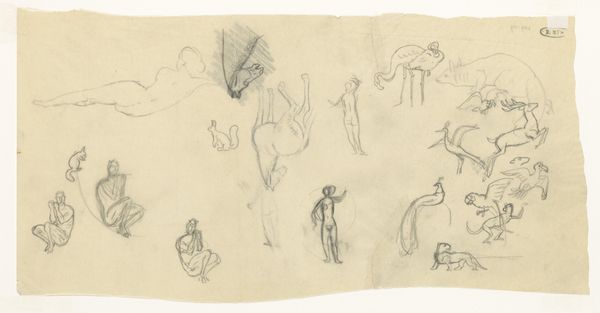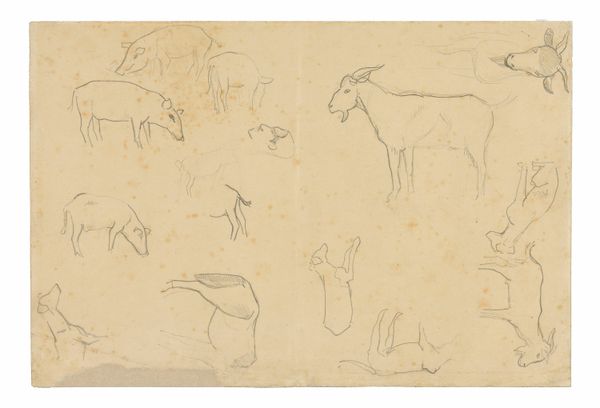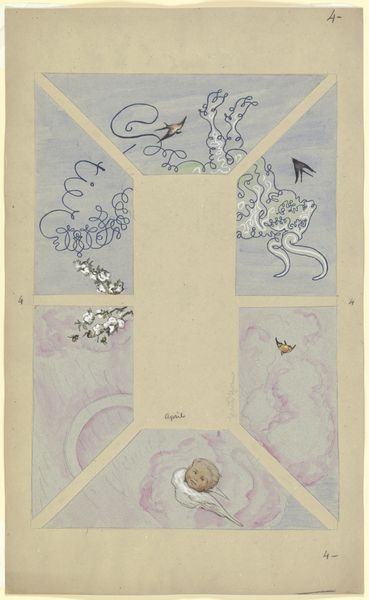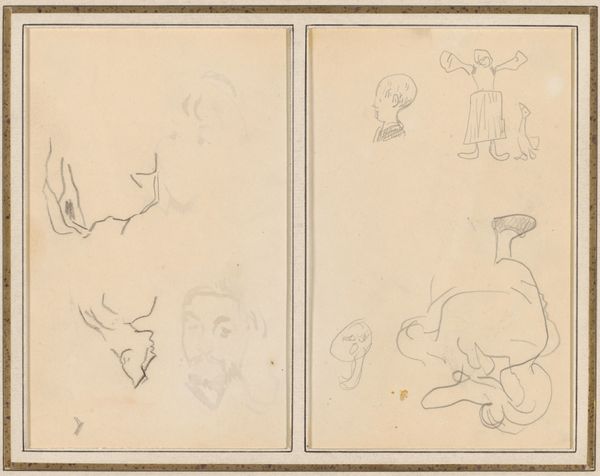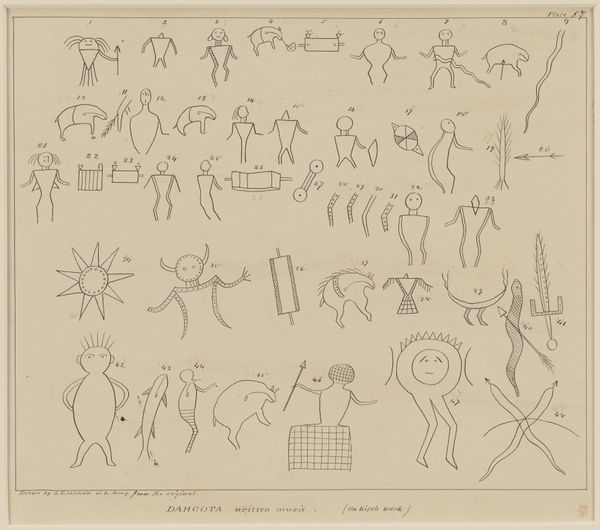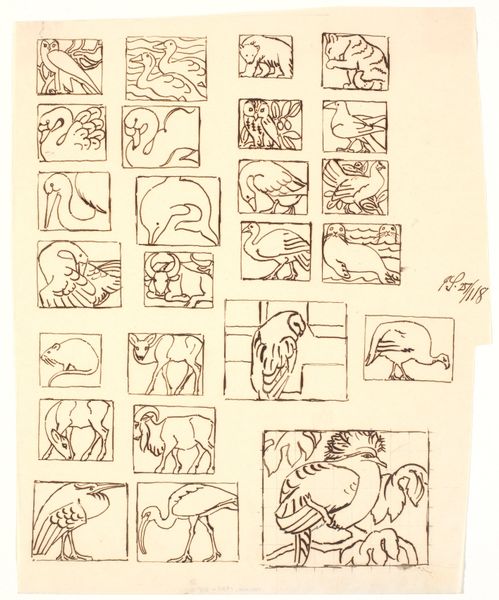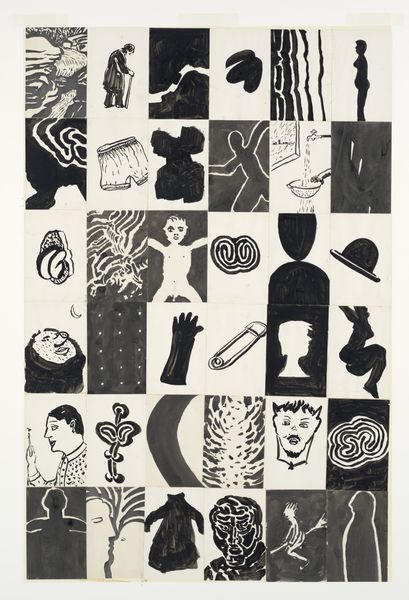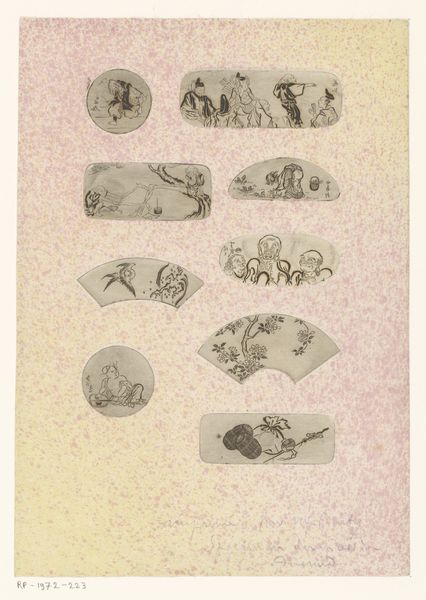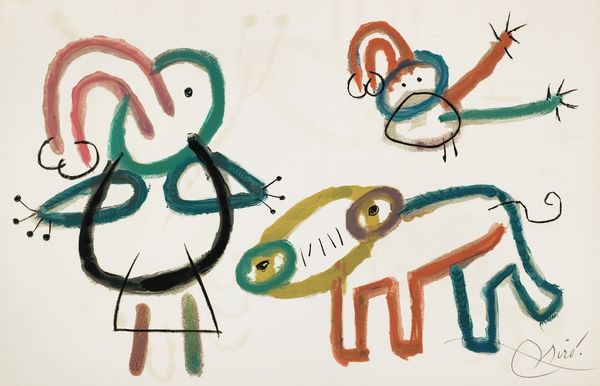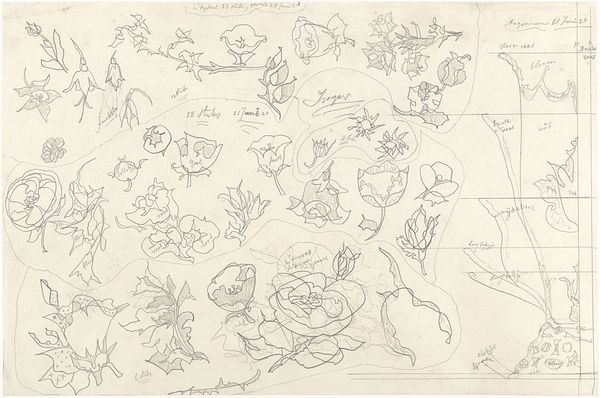
drawing, paper, pencil, graphite
#
drawing
#
pastel soft colours
#
paper
#
pencil
#
graphite
#
watercolour illustration
#
indigenous-americas
Dimensions: 8 15/16 × 6 3/4 in. (22.7 × 17.1 cm) (image)9 5/8 × 7 1/2 in. (24.4 × 19.1 cm) (sheet)21 1/2 × 17 9/16 × 1 1/8 in. (54.6 × 44.6 × 2.9 cm) (outer frame)
Copyright: Public Domain
Editor: This is "Manabosho's Devices" made with watercolor and drawing materials, dated between 1849 and 1855 by Seth Eastman. It's a really intriguing work; the figures seem almost like a code or a series of symbols. What exactly am I looking at here? How do you interpret this work? Curator: This image presents a fascinating, albeit complex, narrative tied to the figure of Manabosho, a significant trickster and culture hero figure within Anishinaabe (Ojibwe) traditions. Eastman’s rendering of these devices is through the lens of a 19th-century artist, within the context of Westward expansion and cultural exchange. But it depicts figures with cultural roots predating colonialism. The imagery uses these graphic depictions of animals, figures and elements of nature in an order. To begin understanding this, what resonates most with you? Is there an image that attracts your eyes? Editor: I'm drawn to the figures with the sun-like circles around their heads, what is the significance of those representations? Curator: Those are incredibly important. The radiant circles often represent spiritual power or connection to the Great Spirit. In the context of cultural exchange during that period, understanding this symbolism becomes crucial. Were these accurate portrayals, or romanticized interpretations viewed through a colonial lens? This piece raises important questions about representation and power. How does Eastman's approach influence how we understand Indigenous knowledge and beliefs today? Editor: So, while on the surface, they appear almost childlike or simple, these symbols actually carry a lot of weight in terms of power and spirituality within Indigenous traditions, which is complicated by Eastman’s perspective as an outside observer. Curator: Precisely. It forces us to consider whose story is being told and how cultural narratives can be appropriated or misinterpreted. Reflecting on Eastman’s positionality allows us to engage in a crucial dialogue about cultural sensitivity. I hope it has highlighted how art objects are produced in specific sociocultural conditions. Editor: It definitely has. Thank you for providing context for approaching such depictions.
Comments
minneapolisinstituteofart almost 2 years ago
⋮
Henry Rowe Schoolcraft reportedly collected these pictographs, which he named for the mythic Ojibwe character Manabosho, around Lake Superior. Although it is unclear how accurately the pictographs were transcribed, they were intended to describe a story, chant, or historical event. Seth Eastman painted four sheets of pictographs as the basis for the illustrations in Schoolcraft's "Historical and Statistical Information Respecting the History, Condition, and Prospects of the Indian Tribes of the United States" (1851-57), and these original watercolors are among the 35 works on paper by Eastman in Mia’s collection.
Join the conversation
Join millions of artists and users on Artera today and experience the ultimate creative platform.
